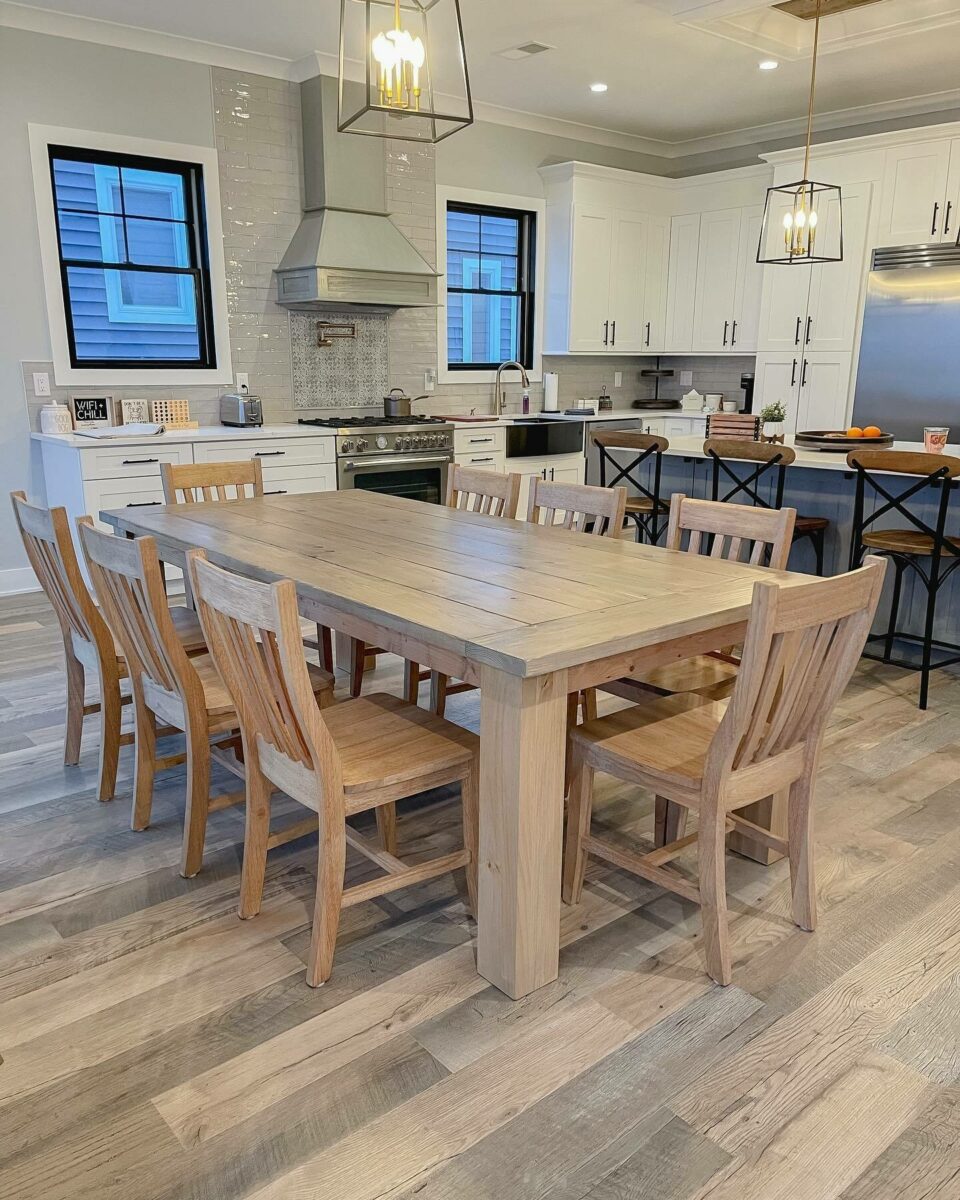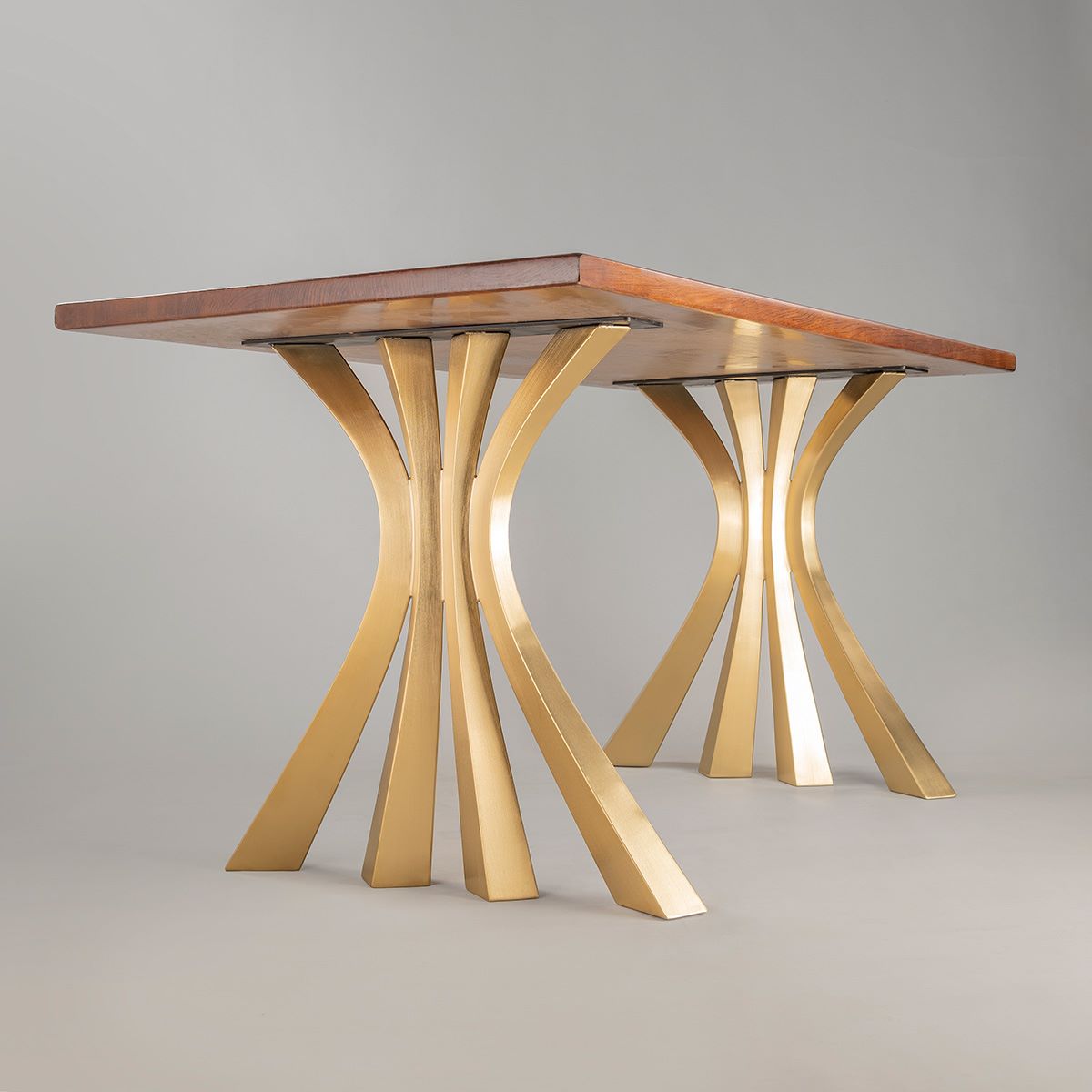Tough and Stylish Choices for Durable Dining Table Legs Wood Solutions
Tough and Stylish Choices for Durable Dining Table Legs Wood Solutions
Blog Article
Key Variables to Keep in Mind for Eating Table Legs Wood Choices
When picking wood for dining table legs, a number of critical elements require careful consideration to make sure both performance and visual allure. The selection of timber kind, identified by its resilience and distinct grain patterns, plays an essential function in the overall style and long life of the piece. In addition, one need to ponder maintenance demands and the ecological ramifications of sourcing products. As these elements link, they considerably influence the last result of your table. Understanding the subtleties of each element can be complicated, leading to important choices that warrant additional exploration.
Wood Kind and Qualities
When picking timber for dining table legs, it is crucial to understand the special features of various wood kinds. Different woods supply unique advantages and downsides, affecting both the resilience and visual allure of the ended up product.
Hardwoods, such as maple, oak, and cherry, are commonly liked for their toughness and resistance to use. Oak, understood for its excellent toughness, also includes a popular grain that can include personality to the table. Maple offers a smooth surface and is much less susceptible to bending, making it a reliable selection for functional furnishings. Cherry wood, with its abundant color that grows gradually, provides an extravagant appearance but might call for even more maintenance to stop scratches.
On the other hand, softwoods like pine and fir are extra budget friendly and simpler to collaborate with, yet they are much less long lasting than hardwoods. Pine is lightweight and includes a cozy, rustic look, making it a popular choice for laid-back eating settings. However, it is a lot more prone to dents and scratches.
Recognizing these attributes will certainly assist in making a notified decision to make certain the legs of the eating table meet both useful and visual requirements.
Grain Patterns and Appearance
The wood's grain is not merely a visual characteristic; it conveys an unique personality and appeal to each piece. Different timber varieties display unique grain patterns, varying from the straight lines of maple to the detailed swirls of oak and the striking number of walnut.
Additionally, the orientation and scale of the grain can affect the regarded size and style of the table. Larger, more obvious grains may offer a bold, dramatic effect, while finer, subtler grains can develop an improved, underrated look. Additionally, the ending up process can further boost these patterns, highlighting the natural beauty of the timber and drawing out abundant colors.
Eventually, the choice of grain pattern need to balance with various other design components, such as the tabletop and surrounding furnishings, making sure a cohesive aesthetic that elevates the eating experience. Thoughtful selection of wood grain not just contributes to the table's elegance however likewise reflects the proprietor's taste and style.
Sturdiness and Strength
The longevity and strength of table legs are paramount considerations for making certain long life and stability in any type of eating room. Choosing the appropriate wood is important, as different species exhibit varying levels of resilience. Hardwoods such as maple, oak, and cherry are often chosen for their fundamental toughness and resistance to wear. These materials not only stand up to daily usage but additionally support heavy loads, making them ideal for dining tables that frequently accommodate multiple diners. Dining Table Legs Wood.

Eventually, spending in high-quality timber and durable construction techniques will produce a table that stands the test of time, while giving a reliable foundation for countless dishes shared amongst friends and family. Focusing on durability and stamina guarantees that your dining table remains functional and aesthetically pleasing for years ahead.
Upkeep and Treatment
Correct maintenance and care are essential for preserving the resilience and strength of eating table legs made from timber. Regular cleansing is essential; making use of a soft, damp towel ensures that dirt and debris do not collect, which can result in scratches and monotony. It is a good idea to stay clear of extreme chemicals or abrasive products that could damage the coating.
In addition, using a suitable wood polish or wax regularly can assist maintain the sheen and safeguard the timber from dampness and spills. Nevertheless, it is crucial to adhere to the maker's referrals pertaining to the sort of product to use, as specific finishes may react detrimentally to details chemicals.
Humidity and temperature variations can likewise affect wood table legs, triggering them to warp or split. It's ideal to position the table away from straight sunshine and warmth sources. Attending to these immediately can stop further damages. if the table legs have any type of dents or scratches.
Finally, regularly evaluating the joints and screws for tightness is necessary to maintain structural integrity (Dining Table Legs Wood). By sticking to these maintenance methods, property owners can guarantee their wooden dining table legs remain appealing and useful for several years to find
Ecological Factors To Consider
When selecting wood for eating table legs, it's necessary to take ecological considerations right into account. The sourcing and sustainability of wood are extremely important in decreasing environmental impact. Selecting wood from qualified sources, such as those recommended by the Forest Stewardship Council (FSC), ensures that the lumber is gathered properly, promoting forest preservation and biodiversity.

Moreover, local sourcing of timber lowers transportation exhausts, supporting regional economies while minimizing environmental impact. It is likewise recommended to be knowledgeable about the wood's treatment and ending up procedures, as certain chemicals can be damaging to both human health and the environment. By prioritizing sustainable timber selections, consumers can contribute to environmental preservation Learn More while enjoying the longevity and appeal of their dining table legs.
Verdict
In final thought, choosing wood for eating table legs demands careful consideration of numerous factors, including wood types, grain patterns, and durability. Upkeep requirements and ecological sustainability further influence timber selections, stressing the relevance of sourcing from certified or reclaimed Home Page materials.
When selecting timber for eating table legs, numerous important variables require careful factor to consider to guarantee both functionality and visual allure.Correct maintenance and care are vital for maintaining the resilience and stamina of eating table legs made from timber.When selecting wood for eating table legs, it's necessary to take ecological factors to consider into account. By focusing on lasting wood selections, customers can contribute to ecological conservation while taking pleasure in the resilience and beauty of their dining table legs.
In final thought, choosing wood for eating table legs necessitates cautious factor to consider of various variables, including timber types, grain patterns, and durability. Dining Table Legs Wood.
Report this page